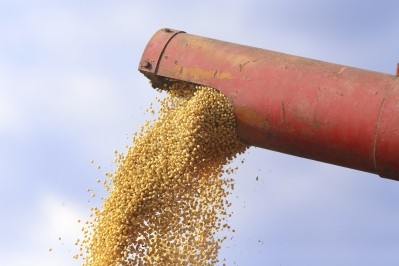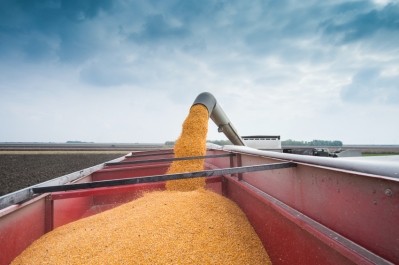Outlook remains bearish for US corn, soy prices

The February release of the US Department of Agriculture’s (USDA) World Agricultural Supply and Demand Estimates again reported an upward shift in supplies of corn, soybeans and wheat.
“We look at wheat, corn and soy showing ample year ending stocks at this point,” said Darrel Good, professor emeritus in the department of agricultural and consumer economics at the University of Illinois. “It acts as a bit of a buffer against any production problems that we might have in 2016.”
“The bearish fundamentals will continue to dominate until we get into the growing season,” he added.
In the US, there is not much prospect for an uptick in demand any time soon given the current exchange rate and weak economic growth internationally, he told FeedNavigator.
“For prices to show much of a rebound, it probably falls back on production,” he said. “The market could stand a hiccup in production. For the near term we’re close to the bottom [of the market;] to see much lower prices would take another year of good crops.”
Corn and soy
In the US, corn imports have increased by 10m bushels while exports have fallen off by about 50m bushels, said officials with the USDA. Corn ending stocks are projected to increase by 35m bushels.
Export drops are expected to be partially balanced by a 25m bushel bump in use of corn in ethanol production, they said.
“We’ll see the ethanol grind probably move a bit higher and hopefully a pretty stable export market for ethanol,” said Good. “For that increase we’re talking a few million bushels of corn, not enough to really alter the overall picture of surplus stocks of corn.”
Corn prices have been trimmed on both ends to a range of $3.35 to $3.85 a bushel, said officials.
Increased corn production in Brazil and Argentina is expected to offset lower corn beginning stocks from the region and lower production in other countries, they said. Beginning stocks in the two countries are lowered as 2014/15 exports have increased.
“Brazil corn production for 2015/16 is raised 2.5m tons based on higher first-crop yields and indications that strong domestic corn prices, reflecting the devalued local currency, will increase second-crop plantings,” they said. “Argentina corn production is increased 1.4m tons on higher area.”
Corn production in South Africa for 2015/16 has been lowered by 1m tons as drought continues, they said and Indonesia’s corn production has been dropped by 0.5m tons, they said.
“The largest change this month is a 2.0-million-ton increase in China corn feed use as relative internal market prices are expected to support greater corn feeding at the expense of wheat,” they said. Corn use is also increased for Mexico, India and Turkey.”
US soybean ending stocks for 2015/16 have been increased by 10m bushels from last month as crush has slowed, said officials. Crush has been reduced based on the soybean meal export forecast.
“Meal exports are reduced on sluggish shipments and sales as well as greater expected competition from Argentina where larger projected soybean supplies boost soybean meal exports,” they said. “Lower U.S. soybean meal exports are partly offset by increased domestic soybean meal use which is raised to reflect relatively strong October-December disappearance.”
Globally, oilseed production for 2015/16 is expected to grow as soybean yield in Argentina increases, they said.
Higher soybean meal disappearance is predicted for the US, India and Canada, said officials. However, oilseed stocks are set to increase to 91.2m tons with soybean stocks in Argentina, the US and Turkey balancing lower rapeseed amounts in the EU and Canada.
Wheat and sorghum
Wheat exports from 2015/16 have been reduced by 25m bushels to 775m based on international competition, said USDA officials. “This export total is the lowest since 1971/72,” they added.
The ending stocks were raised by 25m bushels and are the largest since 2009/10, they said.
World beginning stocks have been increased by 1.7m tons, and stocks for China have been bumped by 2m tons, they said. Global ending stocks have been raised to a record 238.9m tons.
It is not completely clear what will happen with planting the next sorghum crop, said Good. “The lower prices don’t encourage more acres but it’s grown in the areas where winter wheat is down, so I expect it will be elevated in 2016,” he added.
Looking forward
There is some conjecture that the US may have some adverse growing conditions this year, said Good. “Years we’ve had a wet winter have often been followed by a low yield summer. It’s not clear (why) but it’s there in the data,” he added.
Despite low prices, there may not be much of a reduction in the acres of feed crops planted, he said. In 2015, some acres weren’t planted because of weather conditions and that may not be the same case this year.
“Winter wheat producers have reduced acres quite a bit and that adds to the pie for potential planting,” he said. “We might expect both corn and soybean acres to be higher this year.”








